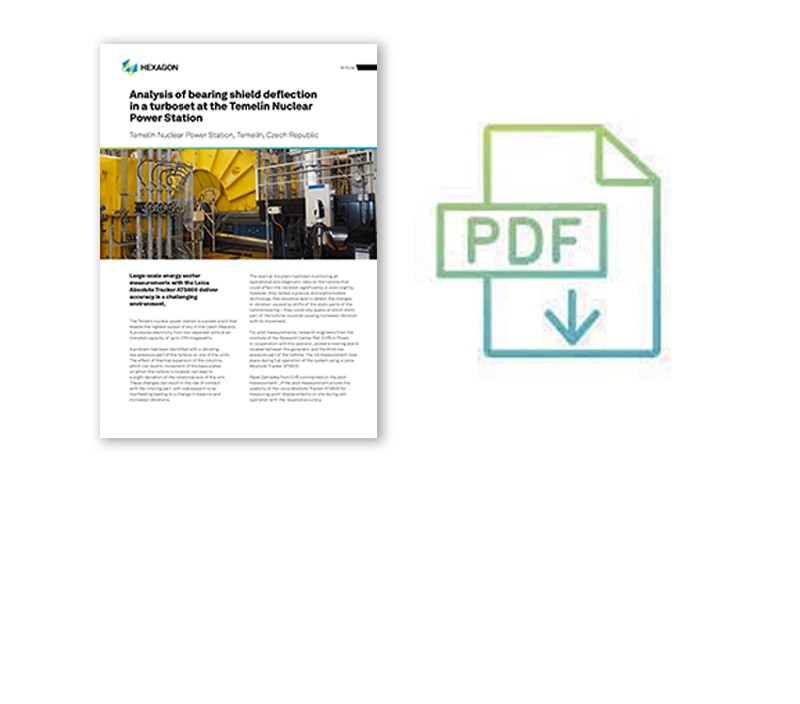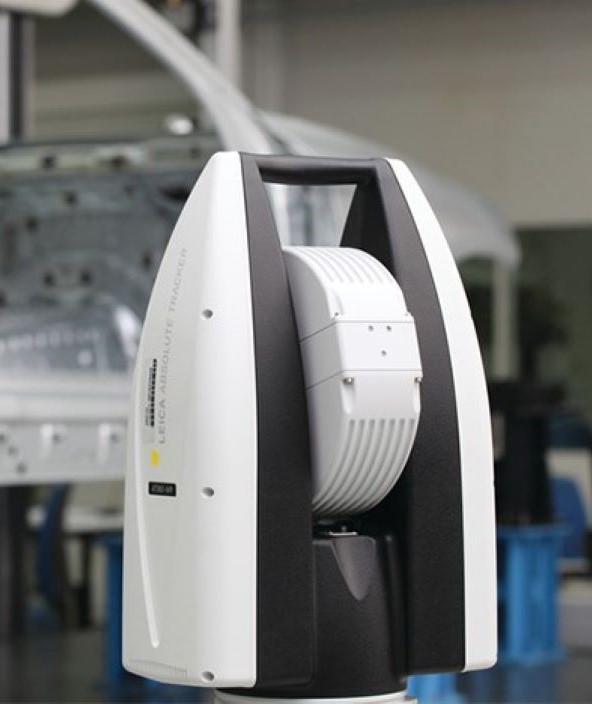Analysis of bearing shield deflection in a turboset at the Temelín Nuclear Power Station
Large-scale energy sector measurements with the Leica Absolute Tracker ATS600 deliver accuracy in a challenging environment
Would you like to know more?
Direct scanning with the ATS600: Deflection analysis at Temelín nuclear plant
The Temelín nuclear power station is a power plant that boasts the highest output of any in the Czech Republic. It produces electricity from two separate units at an installed capacity of up to 2110 megawatts.
A problem had been identified with a vibrating low-pressure part of the turbine on one of the units. The effect of thermal expansion of the columns, which can lead to movement of the base plates on which the turbine is located, can lead to a slight deviation of the rotational axis of the unit. These changes can result in the risk of contact with the rotating part, with subsequent local overheating leading to a change in balance and increased vibrations.
The team at the plant had been monitoring all operational and diagnostic data on the turbine that could affect the vibration significantly or even slightly. However, they lacked a precise and sophisticated technology that would be able to detect the changes in vibration caused by shifts of the static parts of the turbine bearing – they could only guess at which static part of the turbine could be causing increased vibration with its movement.
For pilot measurements, research engineers from the institute of the Research Center Řež (CVŘ) in Pilsen, in cooperation with the operator, picked a bearing stand located between the generator and the third low-pressure part of the turbine. The tilt measurement took place during full operation of the system using a Leica Absolute Tracker ATS600.
Pavel Zahrádka from CVŘ commented on the pilot measurement: „If the pilot measurement proves the usability of the Leica Absolute Tracker ATS600 for measuring point displacements on site during unit operation with the required accuracy [approx. 80 microns], it will be possible to measure the mutual movement of the upper and lower turbine base plates.“
The ATS600 was the device with the best accuracy for measuring at the required distance and at the same time the most suitable system for measuring the displacement of technological equipment. Moreover, measurements between the measured devices can be linked, which is not possible with other methods.
The pilot measurement itself took place in an environment with a temperature of 35° Celcius and with constant vibrations of the setup.
First, the whole part was scanned and then ten key points were defined. These points were measured for three hours at an interval of 20 seconds. During this inspection, changes in the inclination of the bearing stand were simulated and deviations were sought in the resulting point cloud.
The pilot measurements proved the suitability and usability of the ATS600 measuring system for these turboset measurements. A second measurement was performed to measure mutual movement of the upper and lower turbine base plates from one side of the plates at the points of the bearing stands. Movements were measured over a longer time horizon for possible comparison with selected operational data.

